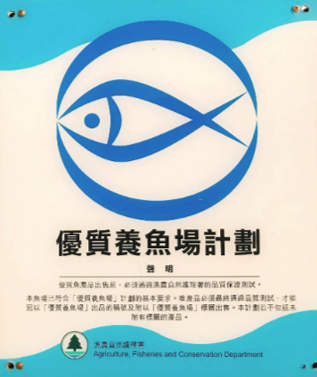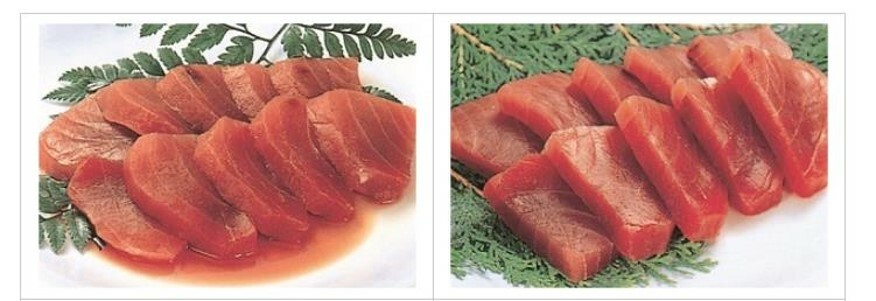1. Sustainable and Responsible Sourcing:
2. High Quality and Freshness:
3. Food Safety and Traceability:
4. Consistent Availability:
5. Reduced Environmental Impact:
6. Support for Local Communities:
7. Health Benefits:
(1) Food Safety and Certification:
A) Our farm and products have been accredited by both 【Accredited Fish Farm Scheme (AFFS)】and Agriculture, Fisheries and Conservation Department (AFCD).
B) We have established the first and the only one "Professional Lobster Farming Education Centre" in Hong Kong which is funded by the Sustainable Fisheries Development Fund (SFDF) of the HK Government. The purposes of it is to demonstrate and to train the local fishermen farmers in the industry and to promote and advertise this low-carbon and healthy local lobsters for the public and F&B sector.
C) Our local-farmed seafood and lobster are low-carbon and environmentally friendly as we farm the fishes from fry stage and the lobster from puerulus or early juvenile stages ,which skips the transportation of fishing or the cost of importing seafood in cargos and saves fuel consumption.
D) We are one of the very few sea water culture fish and lobster farm has been assessed by World Wide Fund WWF.
E) The aquaculture sea water is regularly inspected and tested by the Agriculture, Fisheries and Conservation Department (AFCD) to ensure excellent water quality;
F) Only using ISO22000 grouper-specialized pellet feed for all fishes (even the affordable ones such as pompano and ribbitfish). The feed is not only hygienic and clean but also rich in fish oil and balanced plant and animal protein. The nutrients are good enough for their whole lifecycle. Our philosophy is that fish can only be good if they are fed natural and healthy food like people. So people can only be healthy if their diet includes this good fish.


(2) "Seafood Quality Standard"
ü Zero heavy metals
ü Zero malachite green
ü Zero drug residues
ü Zero hormone added
ü Zero antibiotics
ü Zero artificial colourings
ü Zero additives
ü Zero preservatives added
(3) Hygiene
A) All fishes are gutted, with scales removed, and are cleaned completely. After vacuum packaging, the fish will go for Individual Quick Freezing (IQF). The IQF will make the thickest part of the fish reaching -45 C in a very short time, so as to crystallize the meat cells of the fish.
B) IQF not only can maintain the fleshy and umami taste of the fish, but is also a process of sterilizing and killing bacteria. As bacteria cannot survive under extremely low temperature, IQF fish can have an edible shelf life of up to one year.
(4) Fresh and Delicious
A) The fresh taste of the IQF fish is comparable with that of a live fish.
B) All IQF fishes are made from live fishes.
C) The feed is rich in fish-oil, to make the fish healthy and tasty.
(5) Convenience
A) Our product greatly reduce the work process of gutting and hence, saving the time cost.
B) Our product also saves the time to look for fishes in the fish market.
C) The IQF seafood products have a shelf life of 1 year when stored in freezer (there is an official guideline from the government : Seafood that has been frozen by IQF technology has a shelf life of one year).
(6) Standardized seafood
A) The fish to be supplied for each restaurant branch can be standardized in terms of specifications and the way of handling it.
B) The traditional way of keeping the fish meat is keeping them in the general freezer. It will take quite a long time to make the meat frozen, the frozen fish meat will end up losing its original fresh taste after thawing, and would also be dented and blackened.
C) Problems of this kind can be avoided by IQF rapid freezing. IQF leads the temperature of the meat drop rapidly, making the ice-crystal-like cell molecules inside the meat become small enough to be evenly distributed. The cell tissues will not be damaged and therefore be kept intact.
D) While retaining the original composition and nutrition, the meat quality and umami taste of the food can also be maintained.

The traditional way of using the general freezer would have the cell tissues of the meat damaged after thawing, losing lots of water, whereas Individual-Quick-Freezing (IQF) seafood, the cells of the meat protected by crystallization, with the meat is able to keep its original fresh taste intact after thawing.